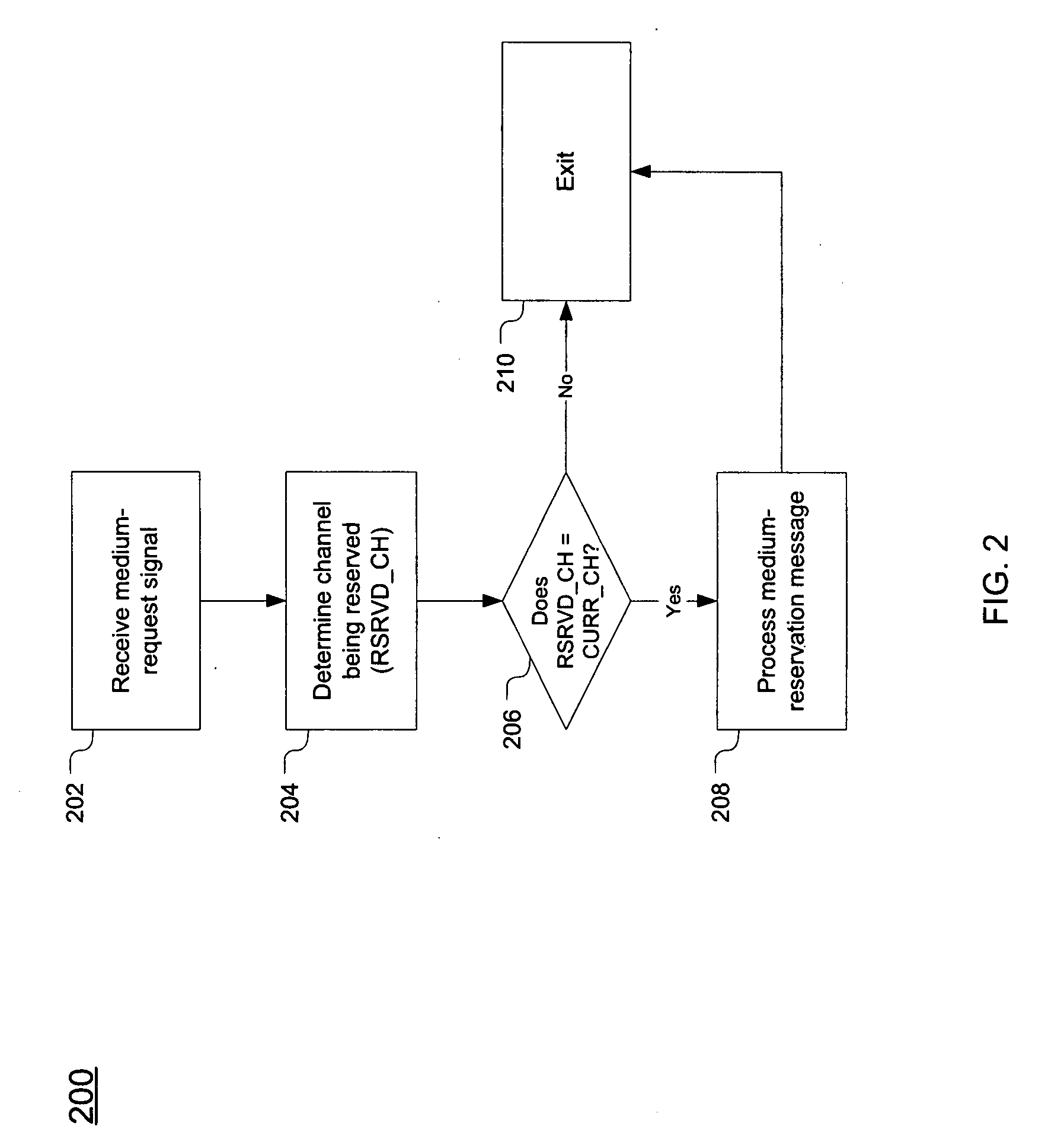Medium reservation with channel selectivity
a channel selectivity and medium reservation technology, applied in the field of wireless communications networks, can solve the problems of reducing the ability of receivers to properly receive transmission on the medium, reducing the ability of medium request signals to create inefficiencies, and many present-day mass-produced wireless communications devices have receivers with limited frequency-band selectivity, so as to achieve the effect of improving transmission efficiency
- Summary
- Abstract
- Description
- Claims
- Application Information
AI Technical Summary
Benefits of technology
Problems solved by technology
Method used
Image
Examples
Embodiment Construction
[0026] Reference herein to “one embodiment” or “an embodiment” means that a particular feature, structure, or characteristic described in connection with the embodiment can be included in at least one implementation of the invention. The appearances of the phrase “in one embodiment” in various places in the specification are not necessarily all referring to the same embodiment, nor are separate or alternative embodiments necessarily mutually exclusive of other embodiments.
[0027] General Concept
[0028]FIG. 1 illustrates exemplary multiple-channel (e.g., wired or wireless) network 100 according to the present invention. The network includes communications stations A, B, C, D, and E. Those stations (e.g., A, B, and C) that communicate using a first channel (e.g., frequency band) are depicted by triangles, while those stations (e.g., D and E) that communicate on a second channel are depicted by squares.
[0029] Like networks of the prior art that utilize CSMA / CA-like protocols for mediu...
PUM
 Login to View More
Login to View More Abstract
Description
Claims
Application Information
 Login to View More
Login to View More - R&D
- Intellectual Property
- Life Sciences
- Materials
- Tech Scout
- Unparalleled Data Quality
- Higher Quality Content
- 60% Fewer Hallucinations
Browse by: Latest US Patents, China's latest patents, Technical Efficacy Thesaurus, Application Domain, Technology Topic, Popular Technical Reports.
© 2025 PatSnap. All rights reserved.Legal|Privacy policy|Modern Slavery Act Transparency Statement|Sitemap|About US| Contact US: help@patsnap.com



